 W
WBarilla refers to several species of salt-tolerant (halophyte) plants that, until the 19th Century, were the primary source of soda ash and hence of sodium carbonate. The word "barilla" was also used directly to refer to the soda ash obtained from plant sources. The word is an anglicization of the Spanish word barrilla for saltwort plants.
 W
WCandle making was developed independently in many places throughout history.
 W
WThe division of labour is the separation of tasks in any economic system or organisation so that participants may specialize (specialization). Individuals, organisations, and nations are endowed with or acquire specialized capabilities and either form combinations or trade to take advantage of the capabilities of others in addition to their own. The division of labour is the motive for trade and the source of economic interdependence.
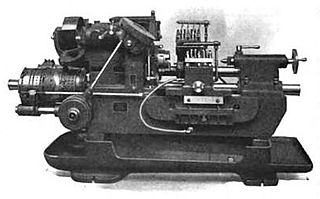 W
WThe Fay automatic lathe was an automatic lathe tailored to cutting workpieces that were mounted on centers. It could also do chucking work. Examples of workpieces included automotive steering knuckles and transmission gears, and such work done on mandrels as flanges, disks, and hubs. The machine tool was developed by F.C. Fay of Philadelphia and improved by Otto A. Schaum. It was originally manufactured by the Fay & Scott Machine Shop. James Hartness acquired manufacturing rights on behalf of the Jones & Lamson Machine Company and manufactured an improved version, developed under the management of Ralph Flanders.
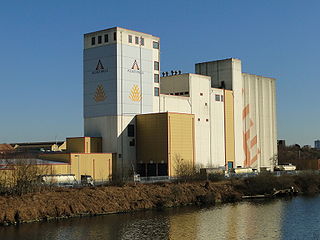 W
WA gristmill grinds cereal grain into flour and middlings. The term can refer to either the grinding mechanism or the building that holds it. Grist is grain that has been separated from its chaff in preparation for grinding.
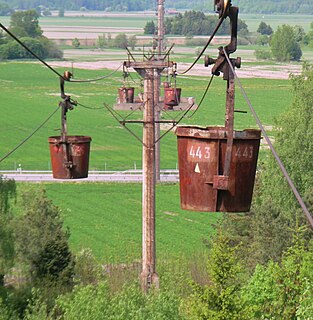 W
WThe Forsby-Köping limestone cableway, commonly referred to in Swedish as Kalklinbanan, was a 42 km aerial tramway running from Forsby in Vingåker municipality to industrial town Köping in central Sweden. Its final destination is the factory at the port of Köping, where cement was manufactured until 1978, and later various limestone derivatives. The cableway was Europe's longest at the time of construction. It was later superseded by a handful of longer cableways, notably the Norsjö aerial tramway, all of which were demolished during the 1960s–1980s. It was taken out of service in 1997 but kept in working order. By that time all longer industrial cableways had been demolished making it at present the world's longest cableway in working order.
 W
WThe glassworts are various succulent, annual halophytic plants, that is, plants that thrive in saline environments, such as seacoasts and salt marshes. The original English glasswort plants belong to the genus Salicornia, but today the glassworts include halophyte plants from several genera, some of which are native to continents unknown to the medieval English, and growing in ecosystems, such as mangrove swamps, never envisioned when the term glasswort was coined.
 W
WThe idea of the Panama canal dates back to 1513, when Vasco Núñez de Balboa first crossed the isthmus. The narrow land bridge between North and South America houses the Panama Canal, a water passage between the Atlantic and Pacific Oceans. The earliest European colonists recognized this potential, and several proposals for a canal were made.
 W
WI.A.Recordings was founded in 1982 by a small group of volunteers, to record past and present industries on film and video, as a resource for industrial archaeology (I.A.).
 W
WMonterrey is one of the most important and wealthiest cities in Mexico. Being the third-largest metropolitan area in Mexico, Monterrey serves as a commercial center of the north of the country. Its huge commercial centers and industries are consequences of its big industrialization after the end of the Second French Intervention War (1861–1867). Before this event happened, Monterrey served as a distribution center of imported goods to the north of the country.
 W
WThe Industrial Revolution, now also known as the First Industrial Revolution, was the transition to new manufacturing processes in Europe and the United States, in the period from about 1760 to sometime between 1820 and 1840. This transition included going from hand production methods to machines, new chemical manufacturing and iron production processes, the increasing use of steam power and water power, the development of machine tools and the rise of the mechanized factory system. The Industrial Revolution also led to an unprecedented rise in the rate of population growth.
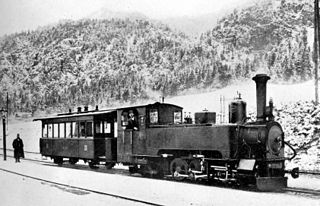 W
WThe Second Industrial Revolution, also known as the Technological Revolution, was a phase of rapid standardization and industrialization from the late 19th century into the early 20th century. The First Industrial Revolution, which ended in the middle of 19th century, was punctuated by a slowdown in important inventions before the Second Industrial Revolution in 1870. Though a number of its events can be traced to earlier innovations in manufacturing, such as the establishment of a machine tool industry, the development of methods for manufacturing interchangeable parts and the invention of the Bessemer process to produce steel, the Second Industrial Revolution is generally dated between 1870 and 1914.
 W
WIronmongery originally referred, first, to the manufacture of iron goods and, second, to the place of sale of such items for domestic rather than industrial use. In both contexts, the term has expanded to include items made of steel, aluminium, brass, or other metals, as well as plastics.
 W
WThe Mexican barbasco trade was the trade of the diosgenin-rich yam species Dioscorea mexicana, Dioscorea floribunda and Dioscorea composita which emerged in Mexico in the 1950s as part of the Mexican steroid industry. The trade consisted in Mexican campesinos harvesting the root in the jungle, selling it to middlemen who brought it to processing plants where the root was fermented and the diosgenin extracted and sold to pharmaceutical companies such as Syntex who used it to produce synthetic hormones.
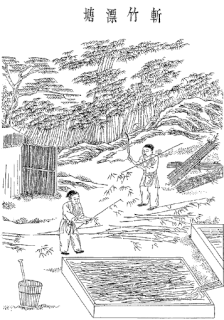 W
WPaper is a thin nonwoven material traditionally made from a combination of milled plant and textile fibres. It is primarily used for writing, artwork, and packaging; it is commonly white. The first papermaking process was documented in China during the Eastern Han period traditionally attributed to the court official Cai Lun. During the 8th century, Chinese papermaking spread to the Islamic world, where pulp mills and paper mills were used for papermaking and money making. By the 11th century, papermaking was brought to Europe. By the 13th century, papermaking was refined with paper mills utilizing waterwheels in Spain. Later European improvements to the papermaking process came in the 19th century with the invention of wood-based papers.
 W
WThe Weber Manuscript, also called Weber Manuscripts, is a collection of nine, possibly eleven, incomplete ancient Indian treatises written mostly in classical Sanskrit that were found buried within a Buddhist monument in northwestern China in late 19th-century. It is named after the Moravian missionary F. Weber who acquired the set from an Afghani merchant in Ladakh, and then forwarded it to the German Indologist and philologist Rudolf Hoernlé in Calcutta. The manuscripts consist of 76 page-leaves, written in Northwestern Gupta and Central Asian Nagari scripts. They were copied before the end of 7th-century, likely in the 5th-century or the 6th–century. The original texts that were copied to produce these manuscripts were likely considerably older Indian texts, at least one between 3rd-century BCE and pre-2nd-century CE. The Weber Manuscript is notable for having been written on two types of paper – Central Asian and Nepalese, attesting to the spread of paper technology outside of interior China and its use for Indian religious texts by the 5th– or 6th-century.
 W
WPaulilles is a protected area on the Mediterranean Sea, located between the towns of Port-Vendres, and Banyuls-sur-Mer in Pyrénées-Orientales, North Catalonia, France.
 W
WQueens of Industry were women who were chosen by their industries, through local, regional and national beauty-pageant style competitions, to become the mascots or official representatives of their fields. This twentieth-century phenomenon began in 1925 when a Railway Queen was crowned to mark the centenary of the Stockton & Darlington Railway. It spread to the other major industries in Britain, first to textiles such as cotton, wool and silk, and then to other industries including coal. The practice stopped in the 1980s in Britain, but continued in other countries into the twenty-first century.
 W
WSalsola soda, more commonly known in English as opposite-leaved saltwort, oppositeleaf Russian thistle, or barilla plant, is a small, annual, succulent shrub that is native to the Mediterranean Basin. It is a halophyte that typically grows in coastal regions and can be irrigated with salt water.
 W
WThe history of the Tejo Power Station, operating from 1908 to 1975 in the Belém district of Lisbon, Portugal.
 W
WTextile History is a peer-reviewed academic journal first published in 1968 and published by Maney Publishing on behalf of the Pasold Research Fund. It covers "aspects of the cultural and social history of apparel and textiles, as well as issues arising from the exhibition, preservation and interpretation of historic textiles or clothing".
 W
WThe turret lathe is a form of metalworking lathe that is used for repetitive production of duplicate parts, which by the nature of their cutting process are usually interchangeable. It evolved from earlier lathes with the addition of the turret, which is an indexable toolholder that allows multiple cutting operations to be performed, each with a different cutting tool, in easy, rapid succession, with no need for the operator to perform set-up tasks in between or to control the toolpath. The latter is due to the toolpath's being controlled by the machine, either in jig-like fashion, via the mechanical limits placed on it by the turret's slide and stops, or via electronically-directed servomechanisms for computer numerical control lathes.
 W
WThe Venetian Arsenal is a complex of former shipyards and armories clustered together in the city of Venice in northern Italy. Owned by the state, the Arsenal was responsible for the bulk of the Venetian republic's naval power from the late Middle Ages to the early modern period. It was "one of the earliest large-scale industrial enterprises in history".